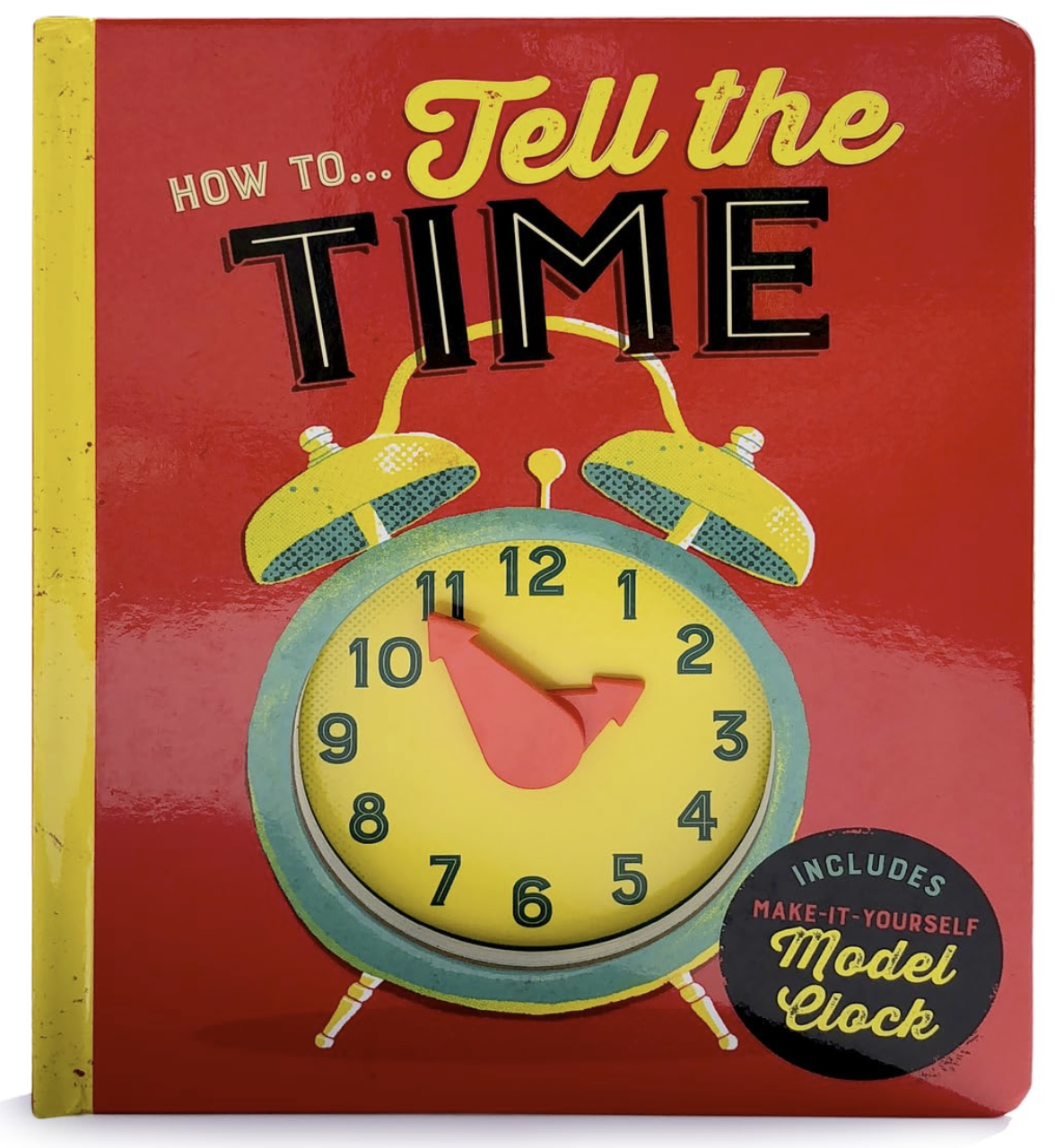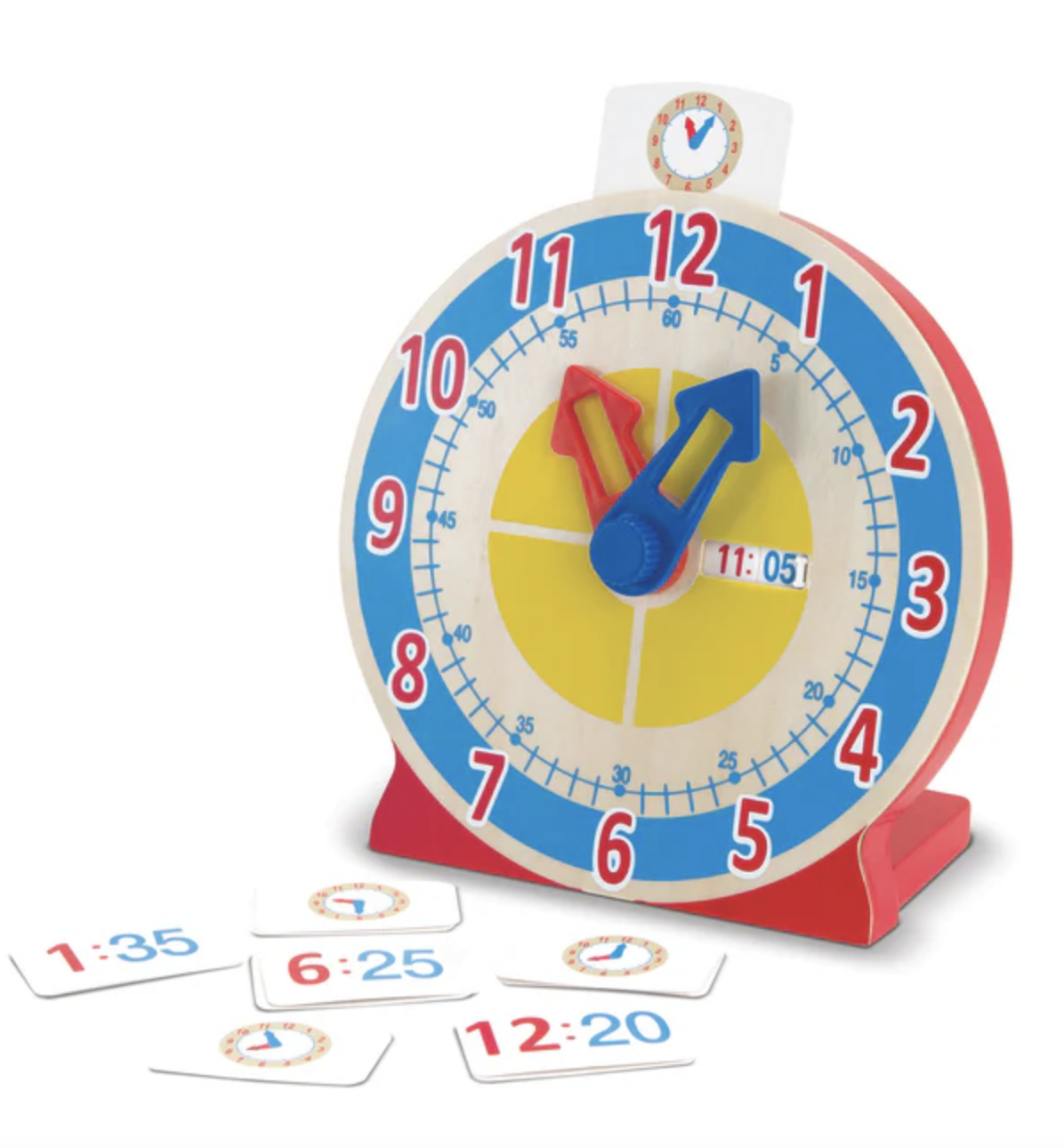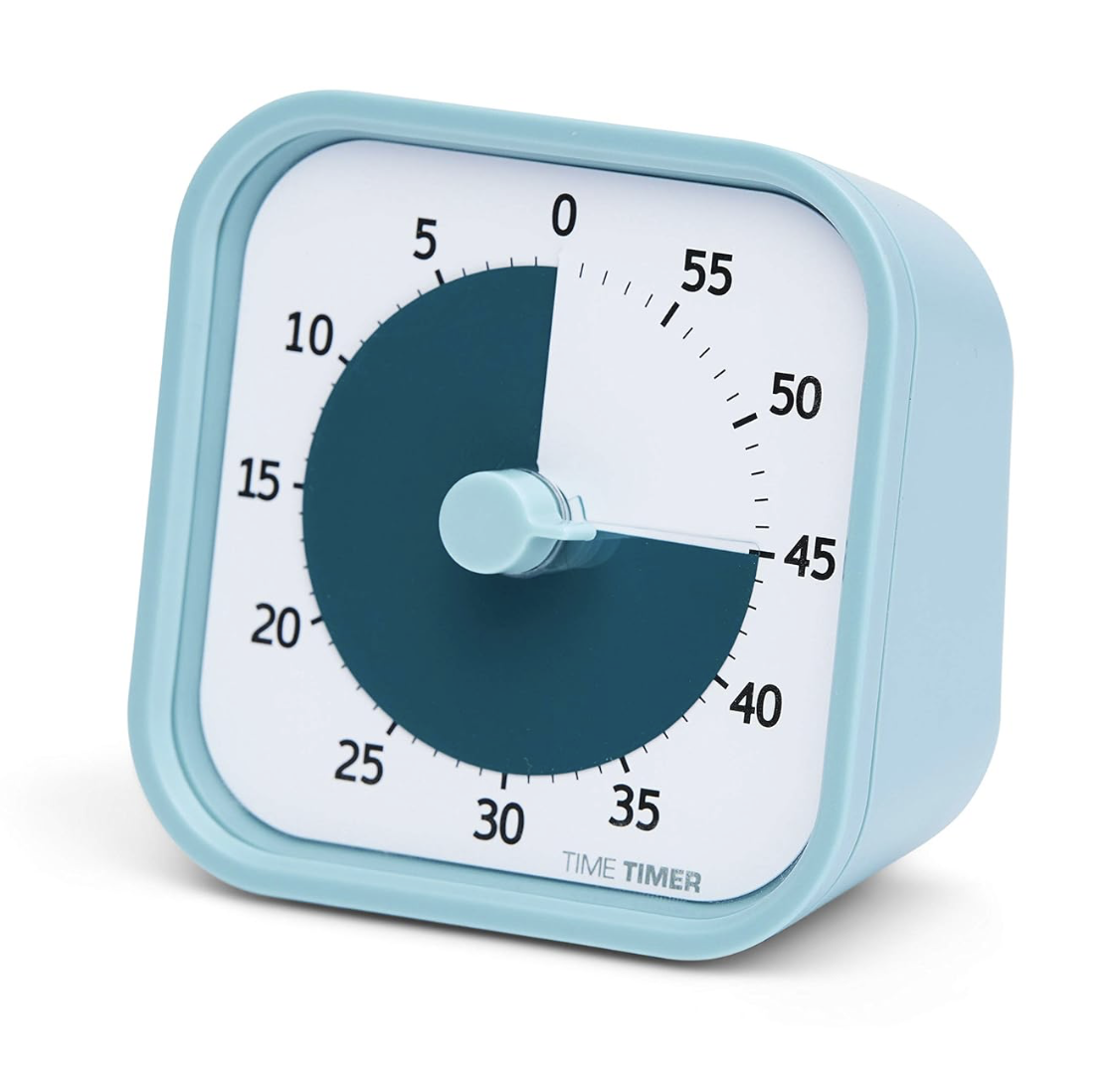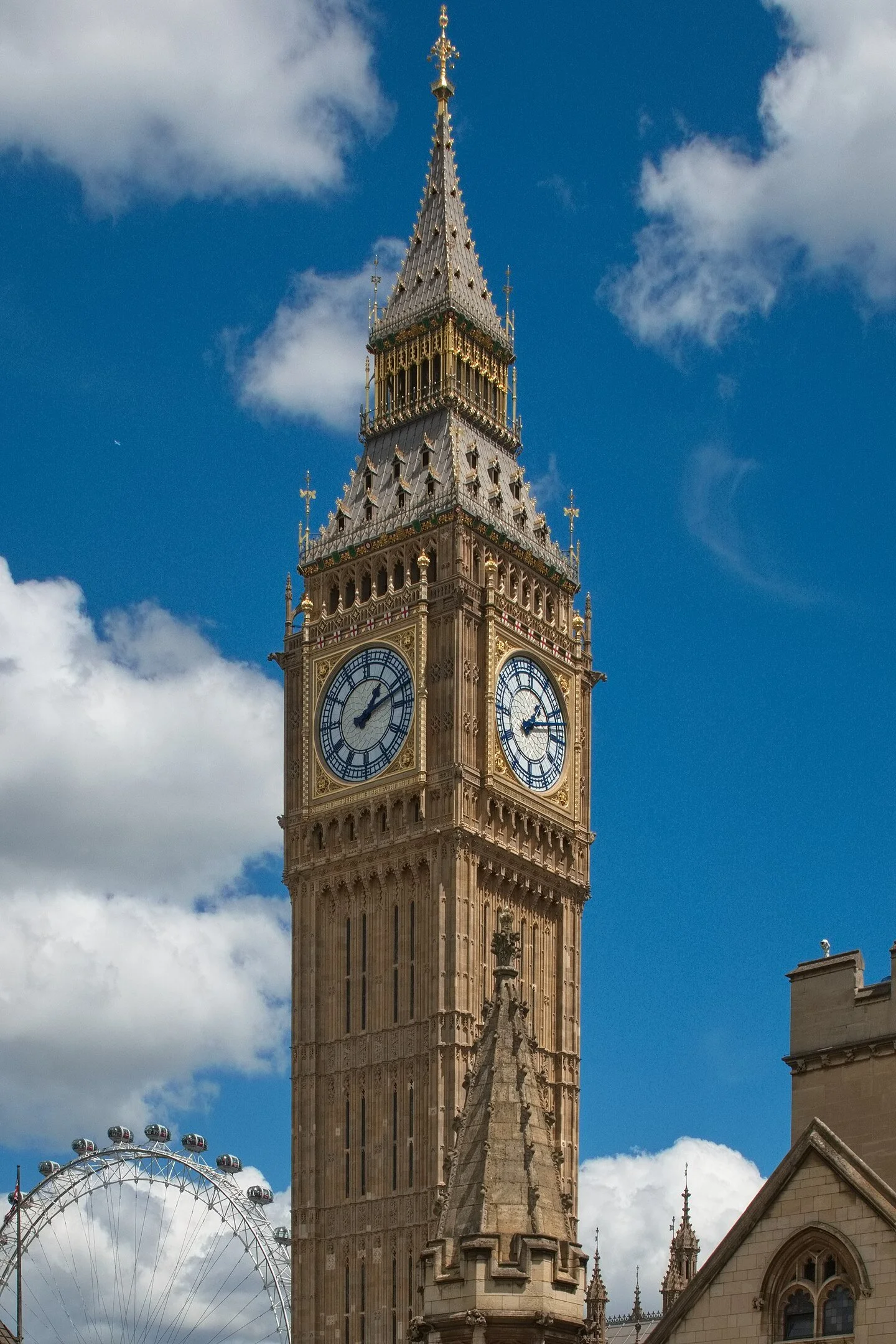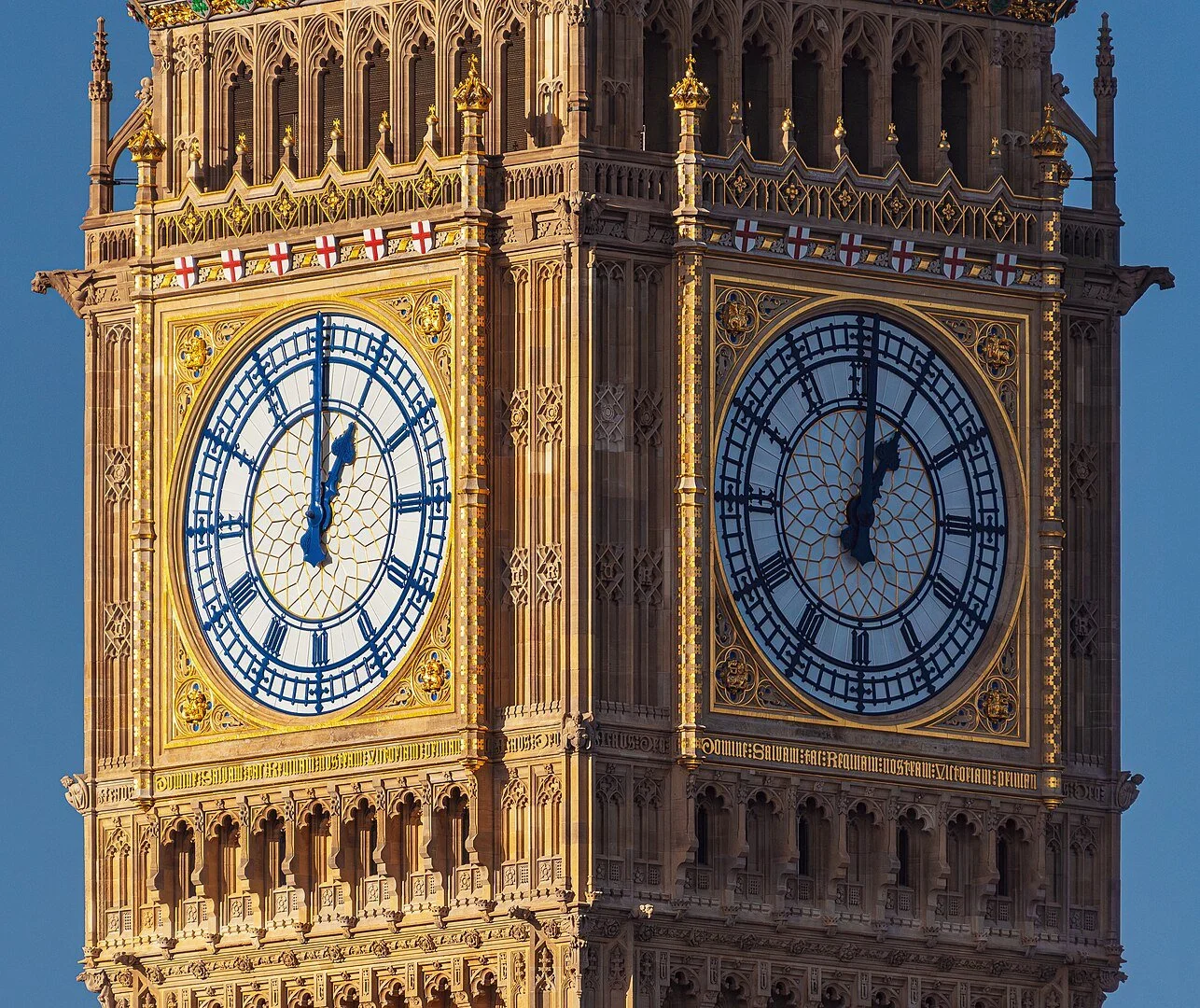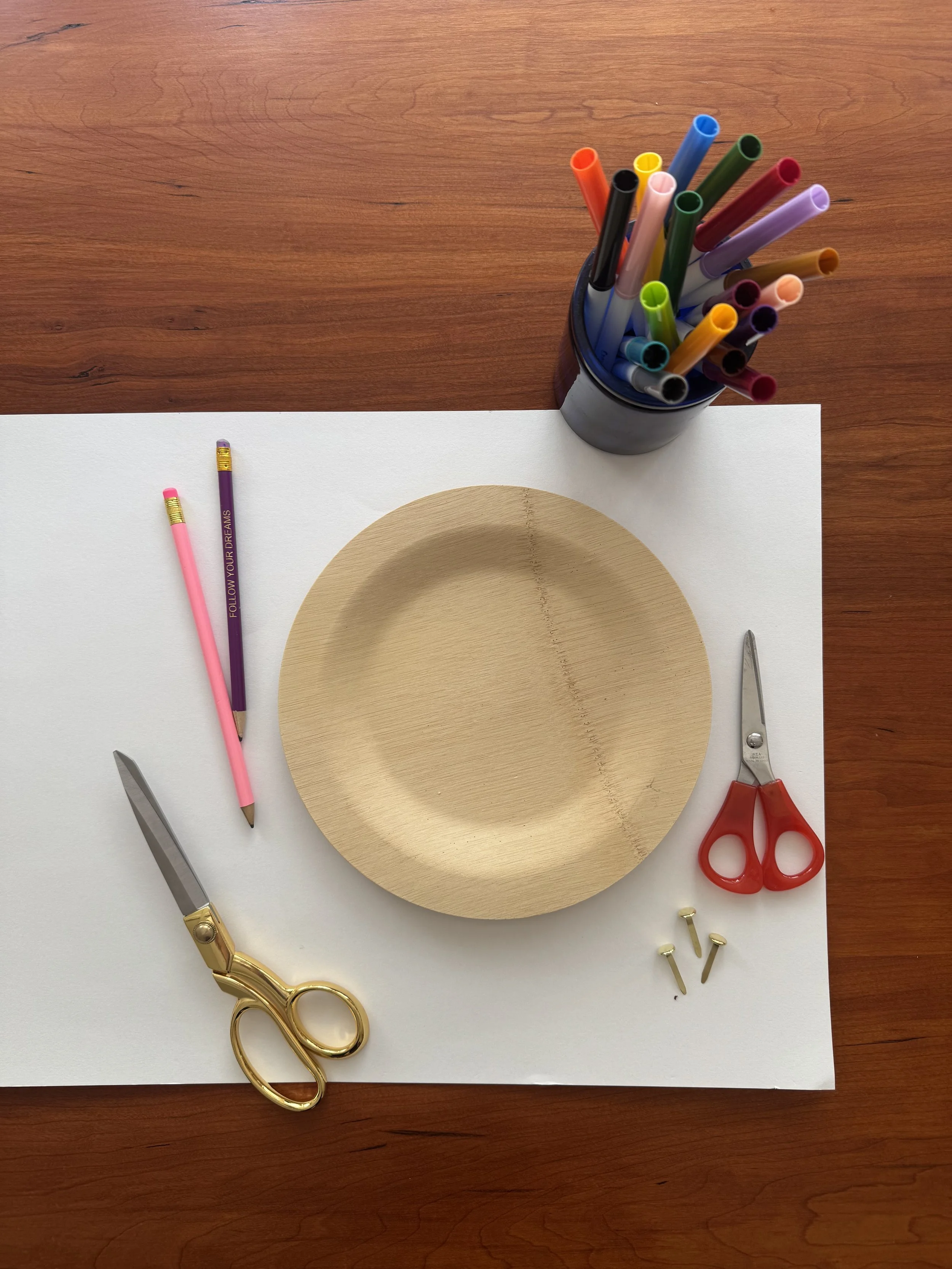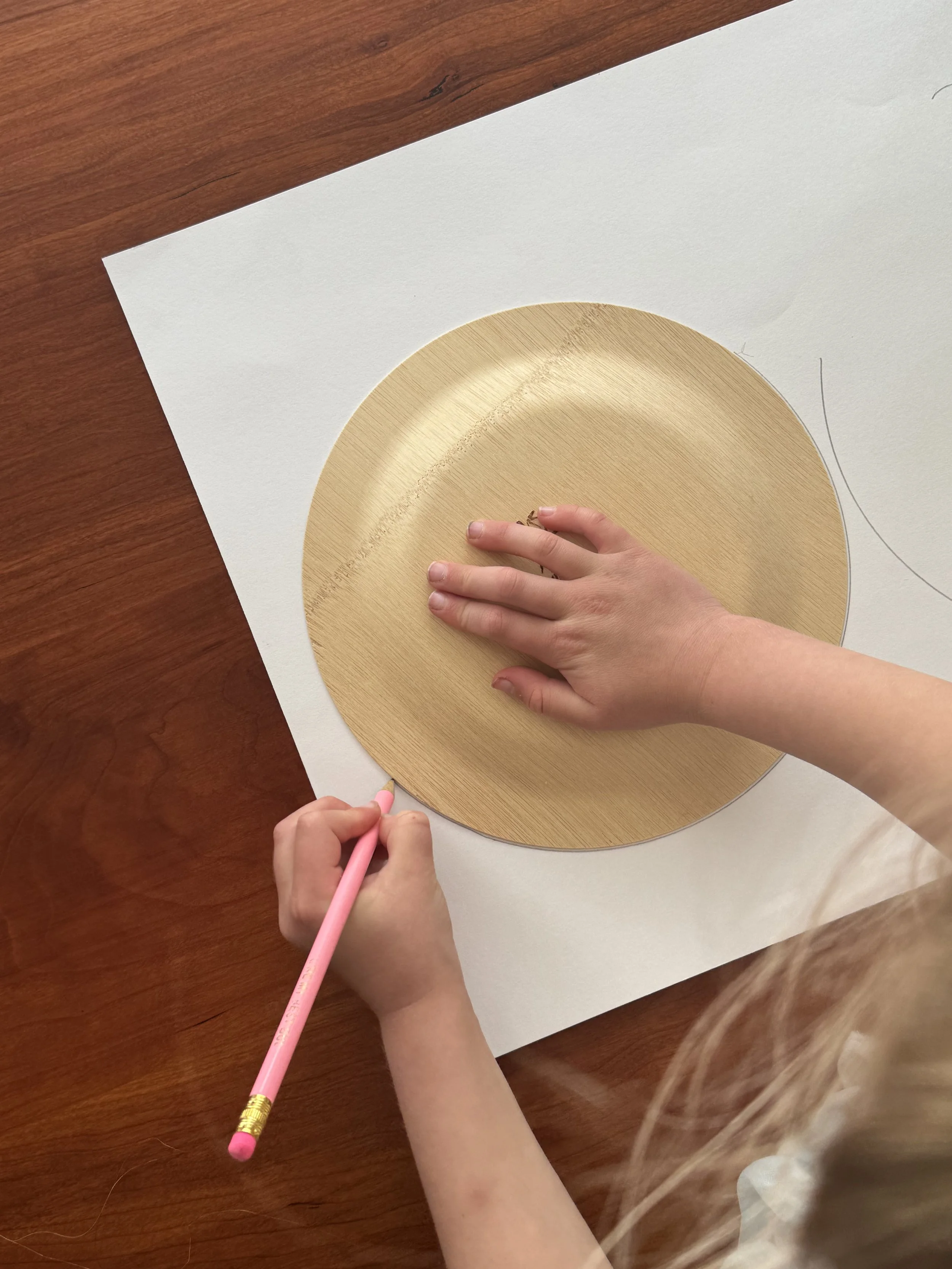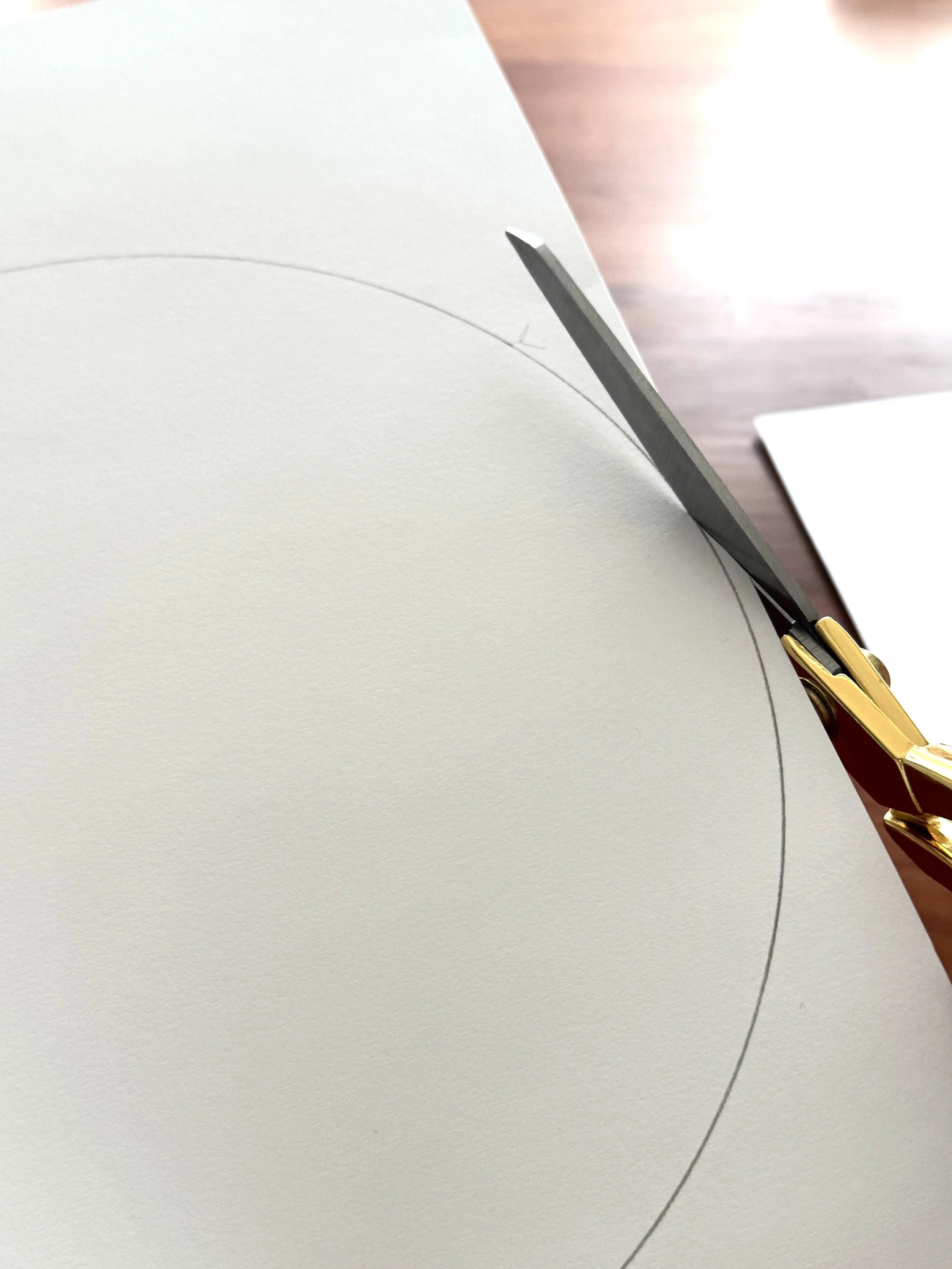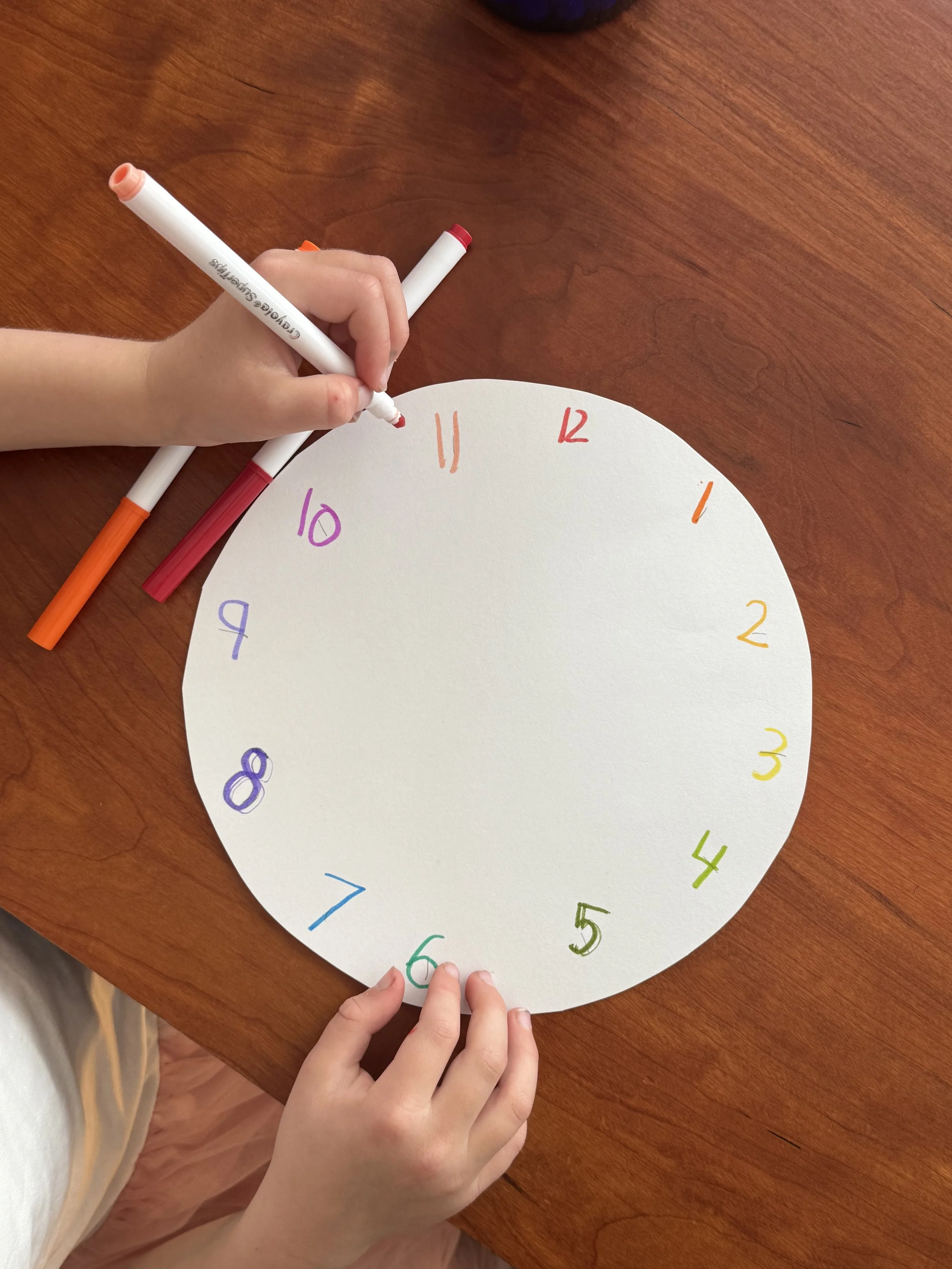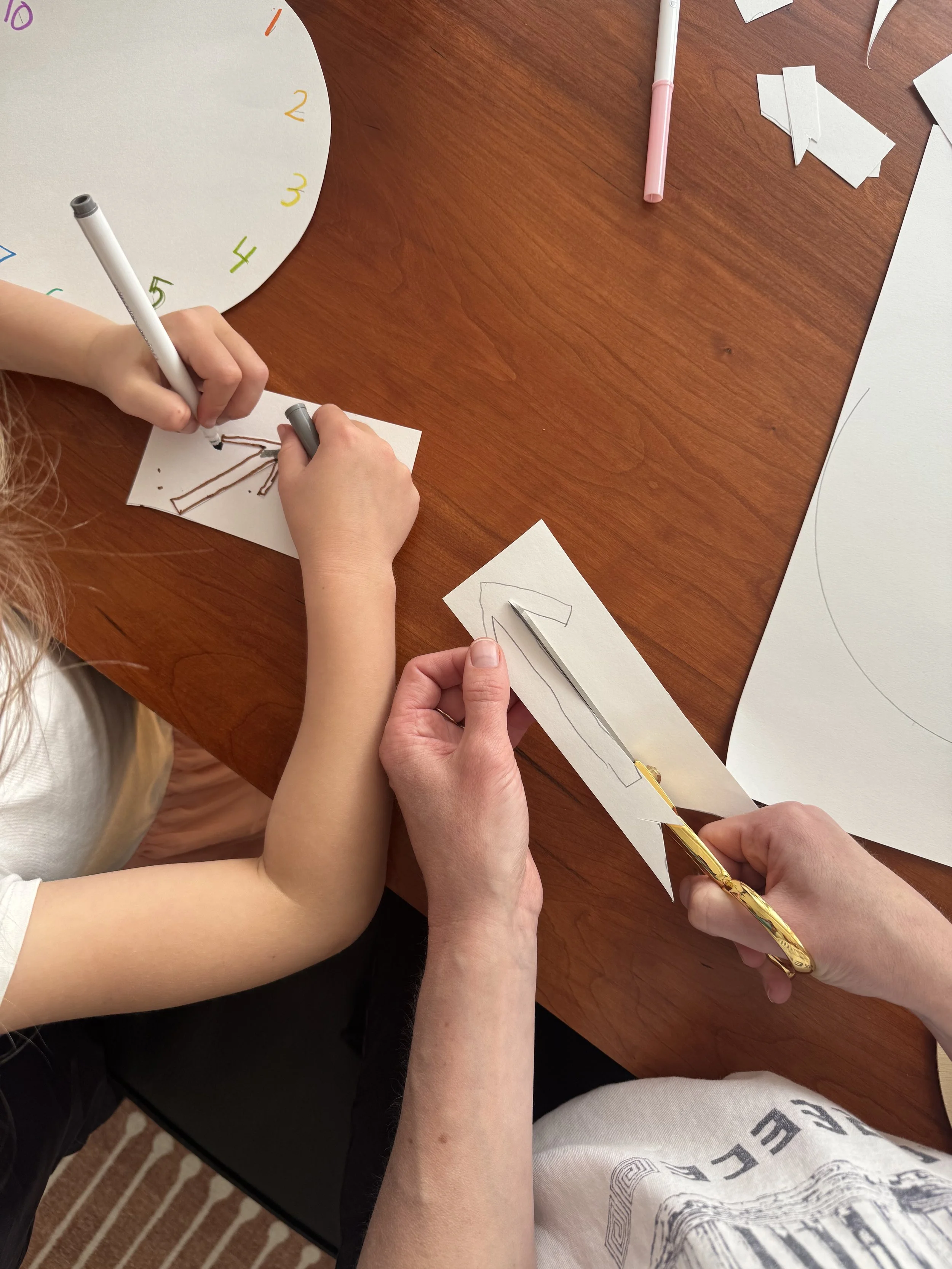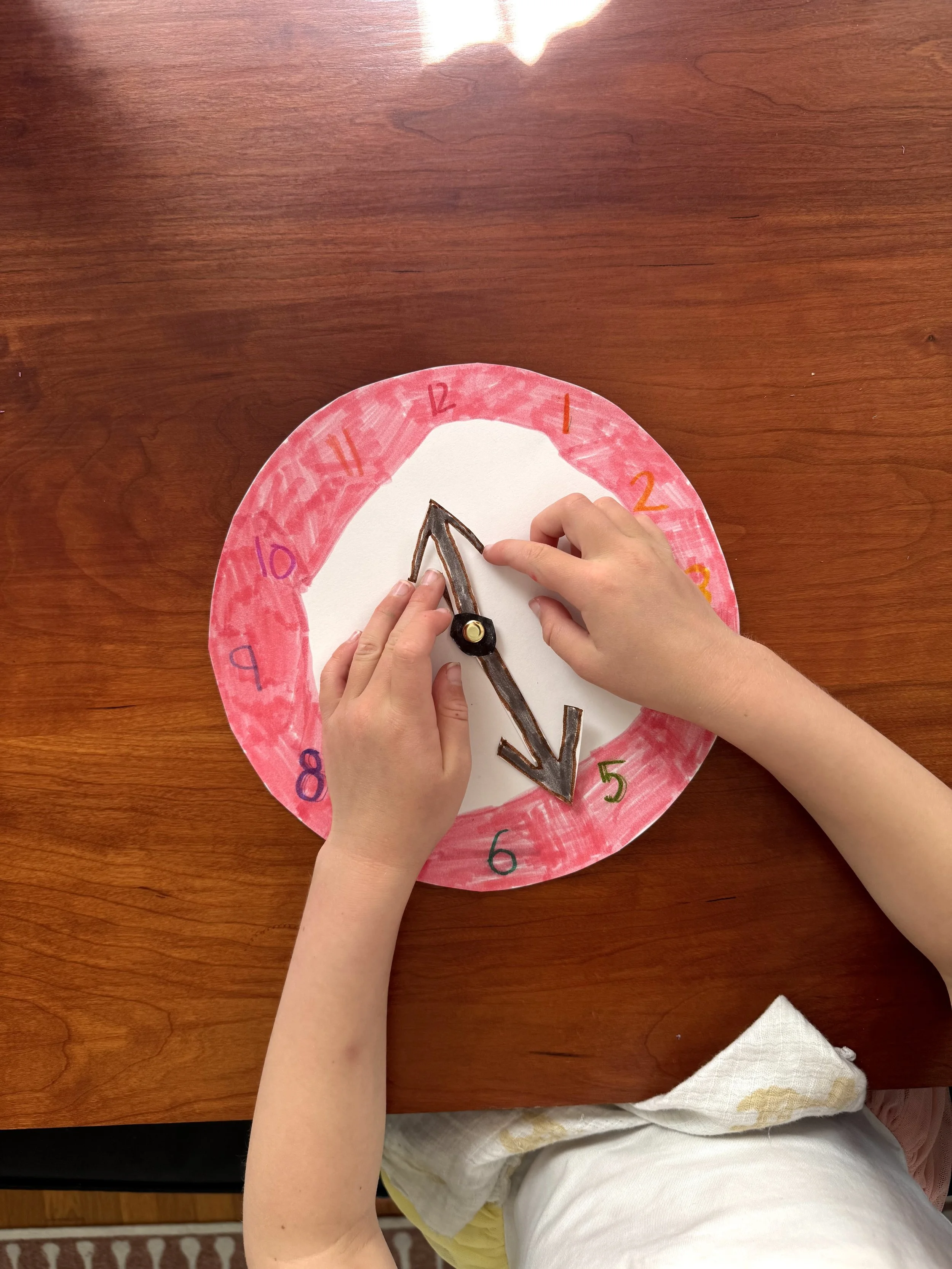Time
Thanks for joining us!
This episode was written by Jean and voiced by Kara and T.
Episode art was drawn by Jean.
It was originally released in May 2025.
— We love these books that help us enjoy and understand time —
Click on each photo for a link to the book on our Bookshop.org account
— Understand time better with these —
Melissa & Doug’s Turn & Tell Wooden Clock
This delightful Forest Calendar from Classic World helps keep track of the date, day of the week, month of the year, season, weather and time!
Tabletop Hardwood Blocks from Lakeshore Learning
A visual timer is a great way for kids to better understand how long
— Enjoy these watches —
The adorably patterned Grech & Co Classic watch has hands are labeled to help clarify which are for the hours and minutes.
The super cool Blok 33 watch includes visual timer blocks to help with time management.
— London’s Big Ben, one of the most famous clocktowers —
Big Ben is the nickname for the clocktower that is located at the north end of the Palace of Westminster in London, England. It was first known as the Clock Tower and was renamed Elizabeth Tower in 2012 to mark the Diamond Jubilee of Elizabeth II.
The tower was finished in 1859 and 316 feet (96 meters) tall. There are four quarter bells, which chime on the quarter hours.
Photograph by Dave Bezaire
Photograph by Terry Ott
Photograph by Julian Herzog
Big Ben is also featured in some iconic movie shots, including the kid-friendly Mary Poppins and Peter Pan.
Wendy, Michael, John and Peter Pan on one of the hands of the clock
Mary Poppins flying over London, past the clocktower
— Make your own “clock” ! —
Gather your materials
A sturdy paper
Something round to trace
Pencil
Scissors
Push pin that can open to flatten
Whatever you want to decorate with!
Trace your round object
Cut it out
Put dashes where the numbers will go
Write the numbers
Draw and cut out two hands of different lengths
Compile the hands onto the pin and push through the paper
Secure the hands and move them around as you like!
— Time Episode Summary —
What happens in a day —
We talk about time a lot – how long something takes to do, when something is going to happen, there are many ways to talk about time.
Here are some words that we use that have to do with time:
Day, week, month, year, yesterday, today, tomorrow, minutes, hours, seconds, morning, afternoon, night, soon, later.
Let’s start with a day. Daytime starts when the sun comes up. We say, “the sun rises”, but actually it is the earth that is turning. When the place where you live is facing the sun, it is day. Most people wake up from sleeping in the morning when the sun shines. We eat breakfast, brush teeth, do hair, and get dressed in the morning. Some parents go to work in an office, kids learn in school.
The morning ends at noon which is usually around lunchtime for most kids and then we go on to the afternoon. In the afternoon, kids may do activities, play, have a snack, read a book, watch some TV. Many adults are still working.
But the earth is still turning, and so the sun then appears lower in the sky. Evening is when the sun is low. That is the time of day when we eat dinner, talk about what we did during the day, maybe take a bath, and wind down with some quiet time. We brush teeth, read a book, put on PJs before bedtime.
And then the sun is gone from the sky so it gets dark. We say “the sun sets”, but actually the earth has turned so that where you are is not facing the sun anymore. It is night. People go to sleep during the night, when it is dark.
As you know, the planet earth is really really big. So the sun does not shine on all parts of the earth at once. So, while it is dark and we are sleeping where we are, the opposite side of the earth is having sun, and it is daytime there. And then when it becomes night time over there, the sun is shining here and it is day.
Have you ever wanted to call your grandma who lives far away, but your grownup says “We can’t call yet, she’s in a different city, she’s still asleep”? That’s because they live in a different area, and a different time zone. The clock has different times across the earth, which are called time zones.
No matter where you live, the Earth is always turning, and night always becomes day. And one full day is 24 hours long.
Days of the week, months, and understanding a year —
Day after day goes by. Some days are exciting if there is a special event, like a birthday, or a show to see, or a championship game! And other days are just the same with school and meals, and work and routines. Days can be counted so we can keep track of what is going to happen. Seven days in a row are called a week, and each day has a name.
The days of the week are Monday, Tuesday, Wednesday, Thursday, Friday, Saturday and Sunday. Saturday and Sunday together are called the weekend – that’s when school and a lot of offices are closed – and the others are the weekdays.
Next, if we put a bunch of days together it is called a month. A month is a group of 30 days, or sometimes 31 days, and one month is even 28 days, except once every 4 years when it’s 29 days, it’s a whole thing! And each day of a month gets a number, starting with 1 and going on from there.
There are 12 months: January, February, March, April, May, June, July, August, September, October, November, and December.
And then all of those twelve months in order make up a year! So a new year started not too long ago and it has a number, 2025, two thousand twenty five. A year is a long time. It’s actually a certain number of days: 365 days. Your birthday happens one time a year. A lot can happen in a year. A baby can learn to walk and talk. A kid can learn to read or ride a bike.
It’s helpful to have a way to keep track of all of these things. We can do that with a calendar.
A calendar can help you see what happened yesterday, and what will happen tomorrow. Yesterday was the day before your last nighttime sleep. The things you did then have happened and are done. Today is right now! We are in today! The time you are spending right now and the things you will do from when you woke up til when you go to sleep tonight, that’s part of this day. Tomorrow is the day that will come after you sleep tonight.
Difference between seconds, minutes, and hours —
When we talk about “telling time” we mean that we can look at a clock and know what it means. Clocks tell us the time. When we look at a clock we can see if it is time to go somewhere, time to watch a show, time to take the muffins out of the oven. Time on a clock is usually measured by three things: seconds, minutes, and hours.
A second is a very quick bit of time. If you count to 5 slowly, you are counting 5 seconds. There’s a trick where you can add in Mississippi in between the numbers. We play a game where we add a
But since seconds are quick, we also need longer units of time. Sixty seconds together is called a minute. A Bluey show is usually around 8 minutes. Muffins take 20 minutes to bake. You’re supposed to brush your teeth for 2 minutes.
Then sometimes we need even longer units of time. That is called hours. One hour is made up of 60 minutes. Your day at school is about 5 hours long. A movie, such as Frozen or Encanto, is more than one hour but less than two hours. It takes almost 6 hours to fly across the United States in an airplane.
the day that will come after you sleep tonight.
Digital clocks, analog clocks, hours, & AM/PM —
So, clocks are machines that show us the seconds, minutes, and hours in a day. Some clocks just show numbers, like the ones on a microwave, or maybe your parents’ alarm clock. Those are called digital clocks. They show numbers, but you still need to understand what the numbers mean. Sometimes it might say something like 12 dot dot 15. It’s the 12th hour of the day, and 15 is the number of minutes.
In our house we have another kind of clock called an analog clock. We also see them a lot in school. They are often round. They have numbers and hands.
They have the numbers 1 through 12, or at least a dot or line that show you where the number would be. Those numbers are around the edge of a cirlce.
And then there are thin sticks that come from the middle and reach out and point to the numbers. Those sticks are called hands.
The thin sticks, the hands, move around the clock. Have you noticed, are they both the same length? No! One hand is long and the other one shorter. And that matters because they’re going to tell us something different. One tells us the hour and one tells us the minutes.
So there are those hands and there are the 12 numbers. Those 12 numbers show us the hours. The number 12 is at the top, the 6 is at the bottom. The short hand points to the hours and it travels all the way around the clock to mark the passing of a day or night.
But here is the tricky part: there 24 hours in one whole day, so the short hand must travel around all the numbers two times to count all the hours in one day, because 12 and 12 is 24.
But that is confusing because if we measure hours from 1-12, and there are two 7’s in the day, how do we tell if it is seven in the morning or in the evening? We put special letters after the number: AM is for morning, PM is for afternoon and night.
When it’s AM and PM switches at the 12 hour. We call the 12 hour in the middle of the night midnight, and that’s when we switch from PM to AM. After the morning, it’s 12 noon and at that 12 we switch over to PM again.
Ok and for some super extra time credit, grown ups, do you know what AM and PM stand for? They come from Latin words. AM is an abbreviation of the Latin words “ante meridiam”, which means, before midday. And PM stands for “post meridiem”, which means “after midday”, the time after noon.
Minutes on an analog clock —
So the short hand tells us the hours, and the long hand tells us the minutes. It takes 60 minutes for the long hand to travel all the way around the clock. And it takes 60 minutes to measure one whole hour.
For the minute hand to go from one big number to the next on the clock takes 5 minutes. There are little lines in between the minutes where you can figure out the exact minute.
So when the long minute hand points to the 12 at the top of the circle it is the start of an hour. The short hand tells us which hour it is. If the long hand points at the 12 and the short hand points at the 3, we say it is 3 o’clock. It’s the start of the new hour.
And when the long hand moves, the minutes tick away and it is 1 minute past 3, 2 minutes past 3, 3 minutes past 3, 20 minutes past 3, 49 minutes past 3, and so on, all the way around until it gets back to 12, when the next hour starts - 4 o’clock.
Timers, stopwatches, watches —
Clocks with numbers, whether digital or analog, are the main way we tell time these days, and know when it is time to eat dinner or go to school.
But there are some other cool things out in the world that help us understand the passing of time. Timers are used to count down. You would start with a number and go to zero. A kitchen timer has a loud ring so we don’t burn the muffins! Let’s say we have 5 minutes left before we need to leave for swim class. We can set a timer for 5 and when it beeps or rings, 5 minutes have passed and it is time to go! Most of our phones have timers on them.
Sand timers also count down, but they don’t use numbers. They have two different areas - a top filled with sand and an empty bottom. When you flip it over and all the sand goes from the top to the bottom through a tiny hole, time is up!
Visual timers show a whole bunch of color in a segment! When there is less time, there’s less color - as we count down, the color goes away.
Stopwatches are used to count up, starting from zero. They are used to understand how long it takes to do something, like a race of people running, or cars driving fast! You can time how fast you can run!
And of course, people wear clocks on their arms – those are called watches. T’s little sister loves those, along with cuckoo clocks, where something pops out of the clock at a certain time, and grandfather clocks, when there’s a bonnng or melody, often to tell us that a new hour has started.
Where did time come from? How did time get made? —
As long as this planet earth has existed, so has the passage of time on it.
We don’t really know who was the first, but we know that for thousands of years, all over the world, humans have found ways to make sense of time.
People have looked to the sun, moon, planets, and stars to pay attention to the passing of time. And for a long time, there was not one system of telling time, different cultures made up their own ways.
5,000 years ago, the Sumerians created a calendar that divided time into sections like years and days (though not exactly the way we do now).
3,500 years ago, people in ancient Egypt figured out a way to measure time with a sundial. They also used something called water clocks.
Thousands of years later, a clock machine was invented that told the time by ringing bells. In the following hundreds of years, smart inventors figured out ways to make the clock machines better, and more accurate. In the 1600s they figured out something called a pendulum clock, and then in the early 1900s we got a quartz timer, and then clocks became very accurate.
We also got all humans in all countries in the world on the same time system in the late 1800s, when Greenwich Mean Time was figured out. And those time zones start to be used.
